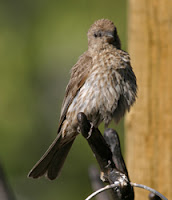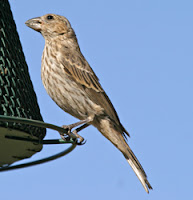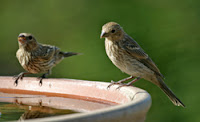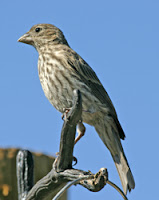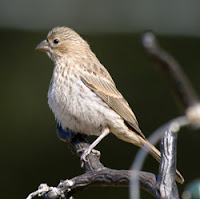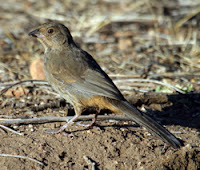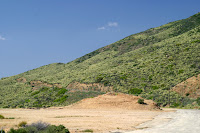As you have most likely seen on the news by now, the US Supreme Court has decided (in Kelo vs. New London) that it is perfectly acceptable for a city to use its power of eminent domain to take property from some private citizens and then transfer it to other private citizens — so long as a "public purpose" is served in doing so. The kicker is, if I'm reading this correctly (and I'm no lawyer!), that the city in question gets to determine whether a public purpose is being served.
Talk about letting the fox into the henhouse! The starry-eyed liberals on our highest court apparently believe in the inherent goodness of governments and the officials that form them. And apparently they don't often read the newspapers, or at least not when they carry the depressingly frequent stories about municipal corruption scandals. We're going through a couple of them in nearby San Diego right now: one involving over a billion dollars in unfunded pension benefits, and the other involving several city councilmen being bribed to loosen up the regulations on strip joints. Tasty. And, in the light of this Supreme Court decision, these shenanigans should scare the daylights out of any property holders within the San Diego City limits. And I would think this new threat hanging over everyone's heads would have a depressing effect on those property values as well...
I take some solace in the fact that this was a close vote (5-4, with O'Connor, Renquist, Scalia, and Thomas dissenting), allowing some hope that this misguided decision might be reversed in the future. Some further hope is that if enough citizens get provoked by this decision, some legislative changes might limit this power (and the opinion appears to support such legislation as controlling). But mostly I'm just very saddened that one of my country's central premises — the property rights of its citizens — has been so violated, and by the Supreme Court, no less. And I am very thankful that I live far out in an unincorporated area where the exercise of eminent domain appears to be exceedingly unlikely — for having the government seize my home (which I have a lot of "sweat equity" in) would be difficult for me to bear...
The dissenting opinion, written by O'Connor, is brilliant. It opens:
JUSTICE O’CONNOR, with whom THE CHIEF JUSTICE, JUSTICE SCALIA, and JUSTICE THOMAS join, dissenting.
Over two centuries ago, just after the Bill of Rights wasratified, Justice Chase wrote:
“An ACT of the Legislature (for I cannot call it a law) contrary to the great first principles of the social compact,cannot be considered a rightful exercise of legislativeauthority . . . . A few instances will suffice to explain what I mean. . . . [A] law that takes property from A. and gives it to B: It is against all reason and justice, for a people to entrust a Legislature with SUCH powers; and, therefore, it cannot be presumed that they have done it.” Calder v. Bull, 3 Dall. 386, 388 (1798) (emphasis deleted).
Today the Court abandons this long-held, basic limitation on government power. Under the banner of economic development, all private property is now vulnerable to being taken and transferred to another private owner, so long as it might be upgraded—i.e., given to an owner whowill use it in a way that the legislature deems more beneficialto the public—in the process. To reason, as the Court does, that the incidental public benefits resulting from the subsequent ordinary use of private property render economic development takings “for public use” is to wash out any distinction between private and public use of property—and thereby effectively to delete the words “for public use” from the Takings Clause of the Fifth Amendment.Accordingly I respectfully dissent.
In a particularly pithy part of her dissent, she writes:
Any property may now be taken for the benefit of anotherprivate party, but the fallout from this decision will not be random. The beneficiaries are likely to be thoseCite as: 545 U. S. ____ (2005) 13O’CONNOR, J., dissentingcitizens with disproportionate influence and power in the political process, including large corporations and developmentfirms. As for the victims, the government now has license to transfer property from those with fewer resourcesto those with more. The Founders cannot have intended this perverse result. “[T]hat alone is a just government,”wrote James Madison, “which impartially securesto every man, whatever is his own.” For the NationalGazette, Property, (Mar. 29, 1792), reprinted in 14 Papers of James Madison 266 (R. Rutland et al. eds. 1983).
Thomas adds his own powerful dissent, including this summary and tie-in to civil rights:
The consequences of today’s decision are not difficult to predict, and promise to be harmful. So-called “urban renewal” programs provide some compensation for the properties they take, but no compensation is possible for the subjective value of these lands to the individuals displaced and the indignity inflicted by uprooting them from their homes. Allowing the government to take propertysolely for public purposes is bad enough, but extendingthe concept of public purpose to encompass any economicallybeneficial goal guarantees that these losses will fall disproportionately on poor communities. Those communitiesare not only systematically less likely to puttheir lands to the highest and best social use, but are alsothe least politically powerful. If ever there were justificationfor intrusive judicial review of constitutional provisionsthat protect “discrete and insular minorities,” United States v. Carolene Products Co., 304 U. S. 144, 152, n. 4 (1938), surely that principle would apply with great forceto the powerless groups and individuals the Public UseClause protects. The deferential standard this Court has adopted for the Public Use Clause is therefore deeply perverse. It encourages “those citizens with disproportionateinfluence and power in the political pro- cess, including large corporations and developmentfirms” to victimize the weak. Ante, at 11 (O’CONNOR, J., dissenting).
Those incentives have made the legacy of this Court’s “public purpose” test an unhappy one. In the 1950’s, no doubt emboldened in part by the expansive understanding of “public use” this Court adopted in Berman, cities “rushed to draw plans” for downtown development. B. Frieden & L. Sagalayn, Downtown, Inc. How America Rebuilds Cities 17 (1989). “Of all the families displaced by urban renewal from 1949 through 1963, 63 percent of those whose race was known were nonwhite, and of these families, 56 percent of nonwhites and 38 percent of whiteshad incomes low enough to qualify for public housing, which, however, was seldom available to them.” Id., at 28. Public works projects in the 1950’s and 1960’s destroyed predominantly minority communities in St. Paul, Minnesota,and Baltimore, Maryland. Id., at 28–29. In 1981, urban planners in Detroit, Michigan, uprooted the largely “lower-income and elderly” Poletown neighborhood for thebenefit of the General Motors Corporation. J. Wylie,Poletown: Community Betrayed 58 (1989). Urban renewal projects have long been associated with the displacement of blacks; “[i]n cities across the country, urban renewal came to be known as ‘Negro removal.’ ” Pritchett, The “Public Menace” of Blight: Urban Renewal and the PrivateUses of Eminent Domain, 21 Yale L. & Pol’y Rev. 1, 47 (2003). Over 97 percent of the individuals forcibly removedfrom their homes by the “slum-clearance” project upheld by this Court in Berman were black. 348 U. S., at 30. Regrettably, the predictable consequence of the Court’s decision will be to exacerbate these effects.
You can download a PDF copy of the decision here.
Update: Randy Barnett at the Volokh Conspiracy has my favorite comment so far on this subject:
In his dissent in Kelo (buried on page 14), Justice Thomas may well have written my all-time-favorite line of any constitutional opinion (perhaps, in part, because it does not seem to be written to be famous):
"Something has gone seriously awry with this Court’'s interpretation of the Constitution."
Had this quote been available at the time, I would have led with it in Restoring the Lost Constitution (which began: "Had judges done their job, this book would not need to be written.") One day, it may be added to such "greatest" lines as "The Fourteenth Amendment does not enact Mr. Herbert Spencer's Social Statics."










